
The Graveyard Jamboree
A grim, grinning phantasmagoria
After leaving the attic through a window, the Doom Buggies fall slowly backwards through a grove of creepy trees toward a graveyard on the Haunted Mansion property. Ghosts flitter all around as the carriages land at the gates to a cemetery. Passing a caretaker (with quivering knees, obviously too frightened to speak) and his whimpering dog, guests make their way through the gates into the lively graveyard, where they find a ghastly gathering of "Grim, Grinning Ghosts" socializing the night away.
It has been suggested to DoomBuggies by a source close to the Imagineers that a subtext to the Haunted Mansion is the viewer's own journey of "crossing over" to the "other side." It is a possibility that the "fall" from the Haunted Mansion roof is a point of transition; a possible marker separating life from death, and the point at which the viewer changes from spectactor to participant in the festivities.
![]()
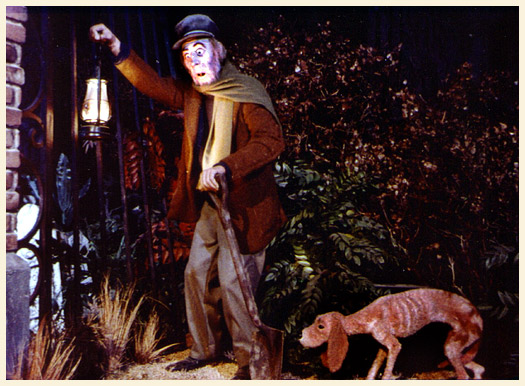
![]()

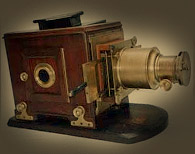
The Magic Lantern: A 200-Year-Old Haunted Mansion
Special Effect
Another interesting note is that another of Disney's effects
- the multitude of ghosts flying out of their graves up into the
air that appears as soon as you leave the attic - is actually a
stage effect made popular in 1798 using a device called the "Magic
Lantern." This trickery was made famous by Belgian magician Etienne-Gaspard
Robertson in shows during which he would project ghosts onto gauze
which was thin enough to see through and masked by smoke. Interestingly,
his biggest fans were from Paris. Nearly 200 years later, similar
effects are still being used quite effectively to entertain Parisians
at Disneyland Paris, as well as guests in all of the Haunted Mansion
attractions.

A party to die for
A ghostly band plays while other spectres of various social strata and historical eras sing, play, and otherwise delight in the midnight reverie. The graveyard, an overwhelming, immersive set, is home to many of the favorite characters from the Haunted Mansion. By utilizing forced perspective (making objects in the background appear distant by skrinking their sizes) and by using multiple layers of semi-transparent floor-to-ceiling scrims to give the scenery a hazy glow, the graveyard scene seems to stretch on forever, into the foggy distance.
Trivia time: the light of life
The caretaker and his dog are lit with incandescent light in the attraction, to subliminally imply that they are among the only "living" characters in the Mansion. All other creatures are lit with UV "black" light, to provide an unearthly glow, and to indicate that they are from the realm of the supernatural.
Graveside groovin'
The Graveyard Band plays a jazzy version of Buddy Baker and XAtencio's "Grim Grinning Ghosts (The Screaming Song)," which is the theme song carried throughout the entire attraction. During the original recording session in late 1969, many different styles of instrumental performance were utilized to try to make the instruments sound "unearthly."
![]()
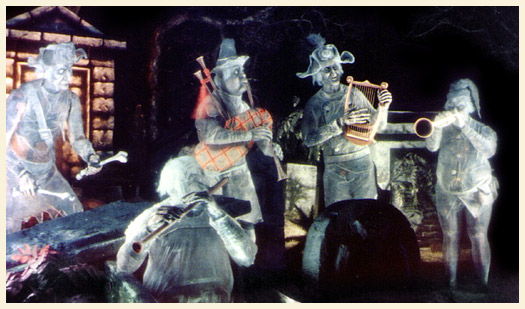
![]()
These methods included such tecnhiques as slightly detuning the instruments, playing them with abstract stylings, and adding special effects. One such effect was to re-score the music backwards, and then to play the notes from end to beginning. When the recorded tune was then reversed on tape, the tune, while following the original melody, contained very eerie, never-before-heard instrumental sounds.
The Graveyard Band consists of a drummer pounding the beat out on a graveyard marker, a flutist, a bagpipe player, a harpist, and a horn player. A gathering of scrawny cats and plump owls join the reverie and add their own harmonies, while demon dogs howl off in the distance. The actual soundtrack heard in the graveyard adds a few unseen instruments to the mix, however. The basic groundwork for the whole scene is layed with a one-minute loop created by a standard-issue '60s swing combo: strumming guitar, organ, trap drums, bass guitar, and a walking contrabass added for good measure. According to Haunted Mansion historian Tish Eastman (writing in Persistence of Vision magazine), the bagpipes heard in the attraction were really performed by an oboe detuned to sound similar to a bagpipe - though the graveyard drummer is actually a recording of a percussionist pounding on two rocks.
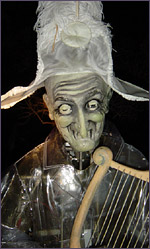
"The process (of developing the graveyard soundtrack) that emerges is one of a musical collage, rather than a rigid score," Eastman explains. She notes that Baker and Atencio recorded as many as 42 different tracks of various instruments and special effect recordings for possible use in the graveyard, included slowed-down and speeded-up tracks from the flute, trumpet, and harp. "All 42 tracks made one big noise in that small show area," Eastman said. So Baker and Atencio ended up picking and choosing from the various tracks to develop the final soundtrack that is heard today.
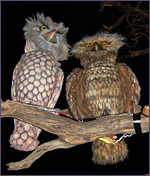 There
are still many things going on sonically in the graveyard. But the underlying
musical theme helps each different track fade into the next, as the Doom
Buggies travel past each graveyard vignette. This technique, incidentally,
was first conceived of by Walt Disney himself along with the Sherman Brothers
while designing the soundtrack for "it's a small world," a World's
Fair attraction that needed numerous different soundtracks to tell the story.
Visit the DoomBuggies.com media pages for many more examples of isolated
loops of various sound, instruments and characters that are heard in the
Haunted Mansion's graveyard, such as the howling hound seen below.
There
are still many things going on sonically in the graveyard. But the underlying
musical theme helps each different track fade into the next, as the Doom
Buggies travel past each graveyard vignette. This technique, incidentally,
was first conceived of by Walt Disney himself along with the Sherman Brothers
while designing the soundtrack for "it's a small world," a World's
Fair attraction that needed numerous different soundtracks to tell the story.
Visit the DoomBuggies.com media pages for many more examples of isolated
loops of various sound, instruments and characters that are heard in the
Haunted Mansion's graveyard, such as the howling hound seen below.
![]()
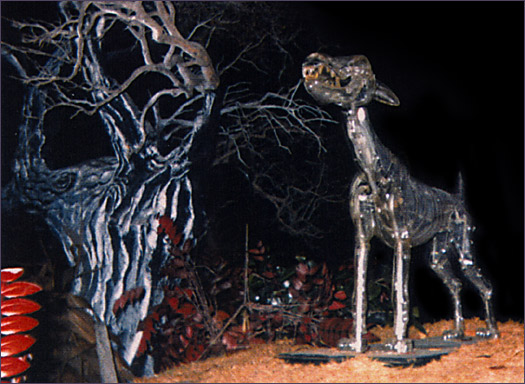

The Haunted Mansion’s sound design: evolving technology
The Haunted Mansion's theme is approximately a minute in length, and was written to be repeated endlessly. As noted above, It can be looped in multiple layers that fade in and out as the rider approaches and passes their source, providing depth and variety, while still holding everything together sonically. When the Mansion first opened, each track (and there were over 30 in the graveyard scene alone) was put onto cartridges that used loops of magnetic tape. Huck, who worked at the park for over six years in the '70s and '80s, explains this system with a little more detail:
"When I started working at Disneyland in 1974, all of the park's audio was generated by machines using magnetic tape media. The most common playback method utilized endless loop cartridge tapes via an assortment of variant players. As with all tape-based systems, periodically these "carts" need to be replaced. "
![]()
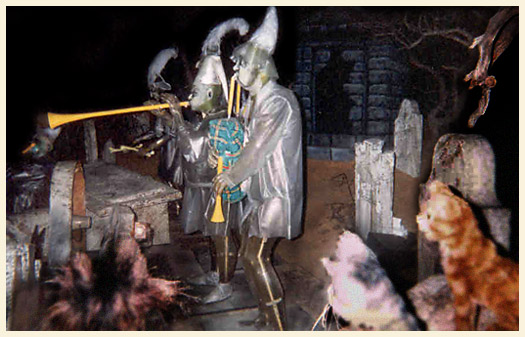
![]()
(Pictured above: another view of the Graveyard Band from behind the scenes. Note the transparent plastic clothing and flourescent colors, to make the characters glow when illuminated with UV lighting. Also note one of the hidden speakers placed to project through a tombstone.)
Huck continues: "The individuals originally responsible for providing taped audio for Disneyland never imagined that someday people would sit and listen to it reproduced on hi-fi gear at home - much less, on computers. The noise floor at the park is so high that it has always hidden a myriad of sonic 'sins.' Boy, they sure loved to drench those music tracks in plate and spring reverb! The park's original cartridge systems used multiple - usually six or eight - carts at a time with the host machine cycling between mechanisms. Eventually, this method was superceded by newer players using single longer cartridges. So, instead of having five individual carts alternating independent four minute Matterhorn Bobsleds music-spiels, for example, there was one twenty minute tape that combined all of the spiels."
As digital audio technology has advanced, WDI has replaced the magnetic tape audio system described above with an E-PROM-based system. The E-PROM is a solid-state card that contains any given audio loop. The loop is then plugged in to the appropriate element, and the E-PROM can control the timing, as well as provide digital audio quality. Continue to the next page to learn more about the Mansion's groovy Graveyard scene.




